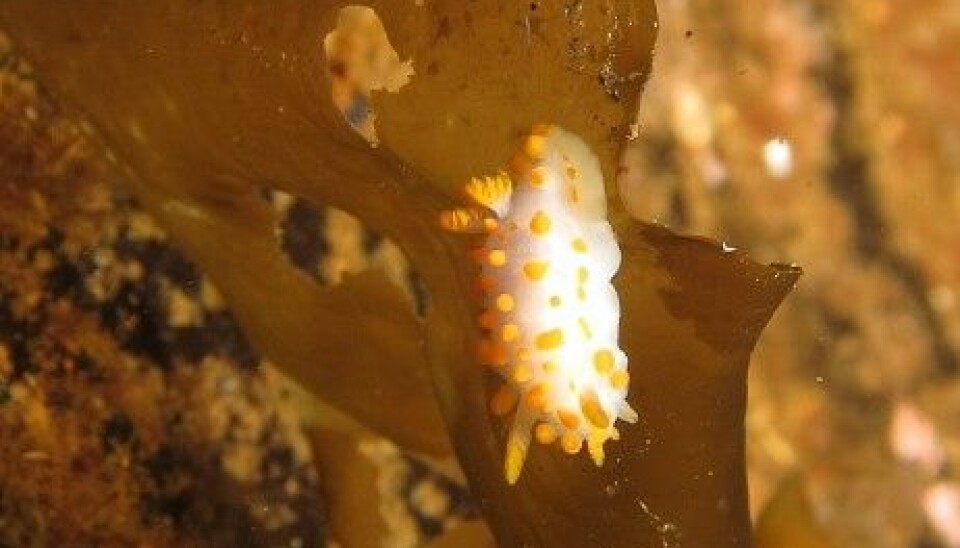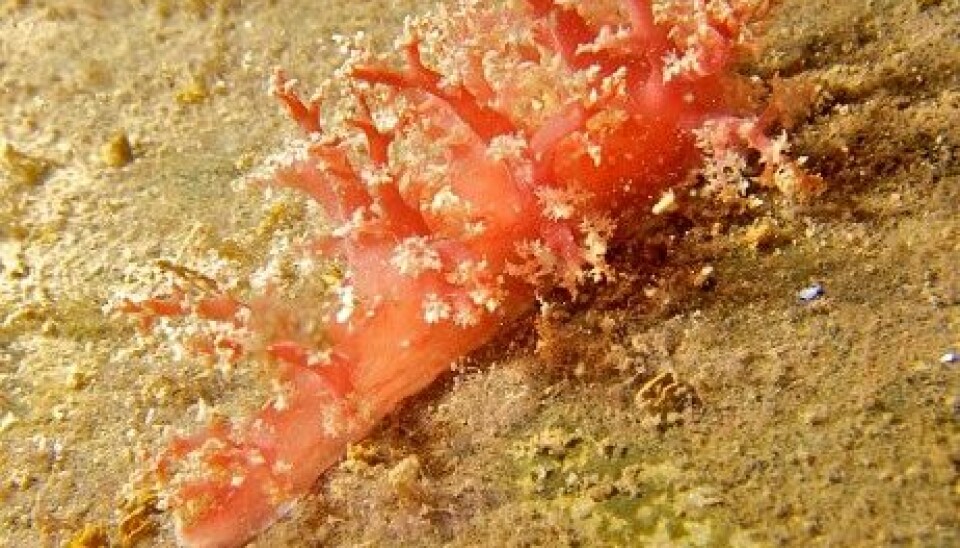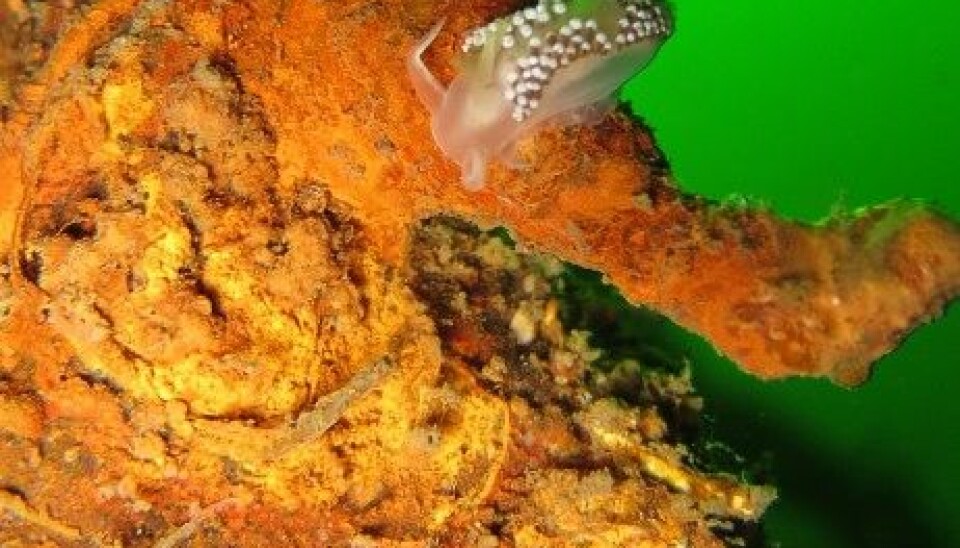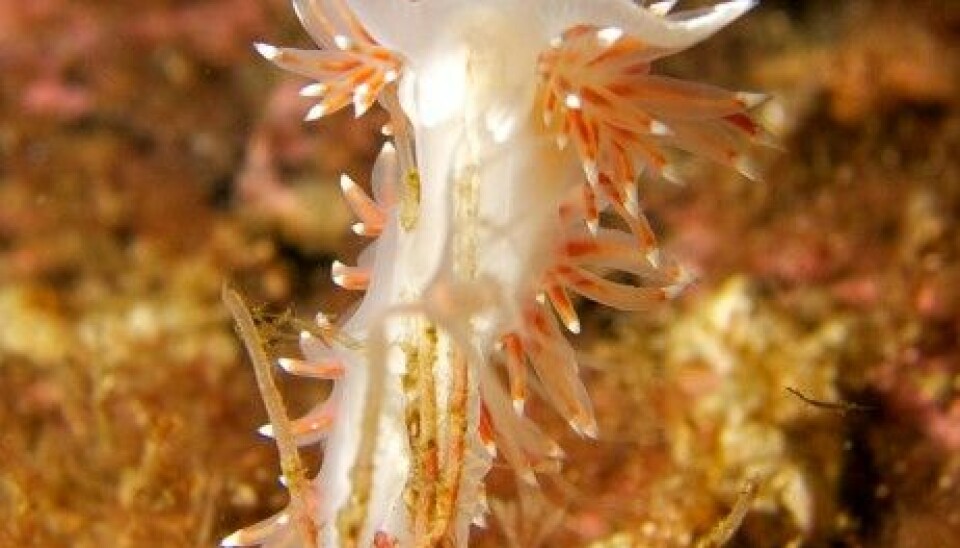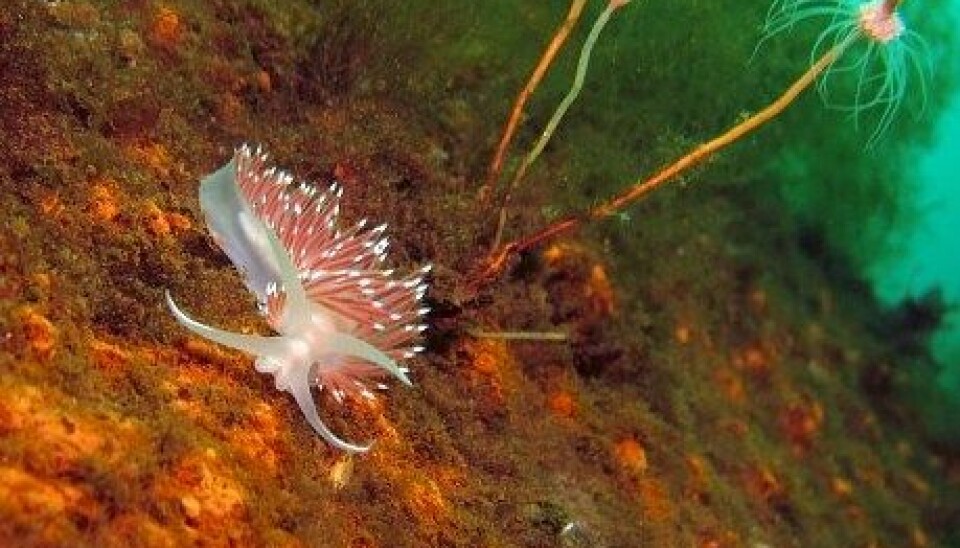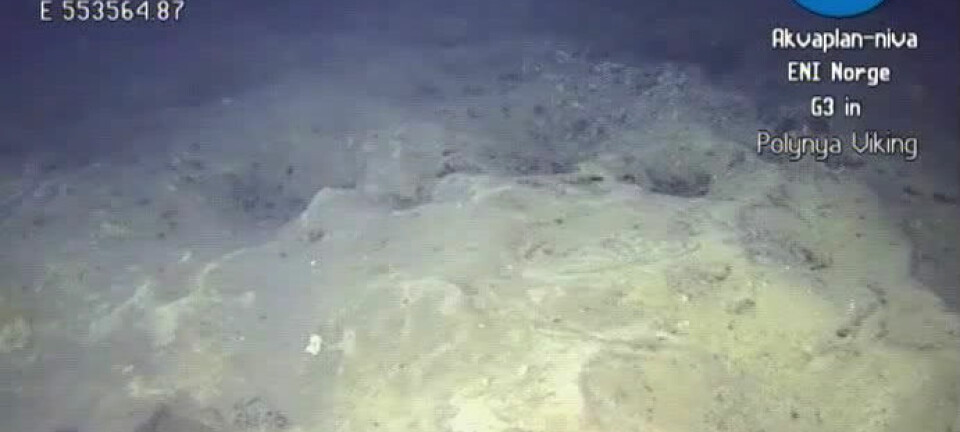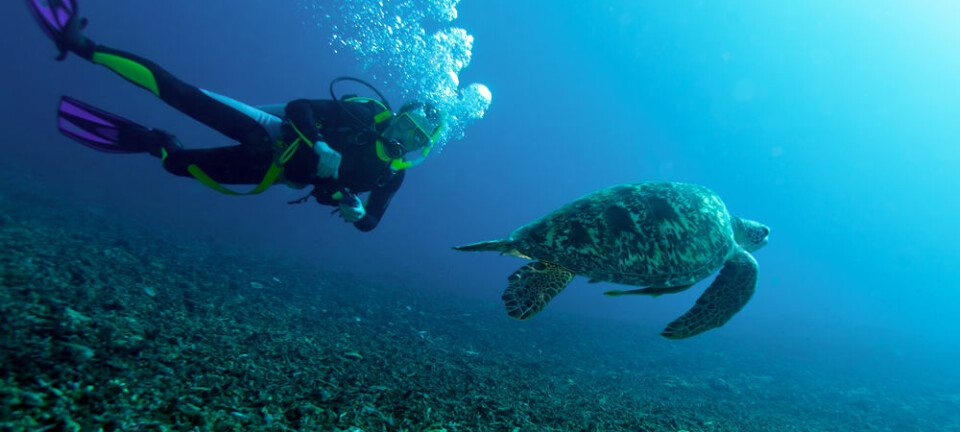Soft sea slugs pack a hard punch
Sea slugs may sound like they're soft and squishy, but they have poisonous tentacles and eat nearly everything they come across, including each others' eggs. These delicate and often brightly coloured animals are ferocious predators.
Denne artikkelen er over ti år gammel og kan inneholde utdatert informasjon.
Divers and others who spend time in the ocean along Norway’s long, crenulated coastline are sure to come across colourful sea slugs. But their appearance shouldn't fool anyone, says Jussi Evertsen, a marine biologist and researcher at the Norwegian University of Science and Technology. Evertsen may be one of Norway's most knowledgeable scientists about the creatures.
“They eat just about anything that lives on the seabed," he says. "Everything from coelentera, such as corals and jellyfish, to bryozoans and barnacles that live at the water’s edge. Some have specialised in eating the eggs of other sea slugs."
Eat tiny poisonous creatures
Nearly 100 nudibranch species, which includes sea slugs, live in Norwegian waters. As the “nude” in nudibranch suggests, they are naked ‒ lacking a shell. At first glance they might seem defenceless against famished fish.
Although sea slugs are slow, soft and stand out in their environment, they have a few tricks that keep them from becoming meals: They have one or more rows of poisonous tentacles along their backs, called cerata, which give them ample protection.
“When a creature sheds a shell it has to evolve other defence mechanisms. This is why many sea slugs have long cerata filled with stinging cells, or nematocysts,” says Evertsen to NRK.no.
The sea slug's best survival tool is perhaps its enormous appetite.
“Many of them eat coelenterata, a phylum with stingers that includes jellyfish. The sea slugs are not stung by their food, but any creature that tries to eat them is in for an unpleasant surprise," he says.
Sea slugs have a complicated system which enables them to take the toxins in their food and transport them to the organs on their backs.
Hermaphrodites
In keeping with their exotic digestive system, sea slugs also have an unusual reproductive system. They are simultaneous hermaphrodites, meaning they have both male and female sex organs.
“When two nudibranchs meet, they both try to fertilise each other, which they usually manage to do. First they both act as males and exchange sperm. Then they act as females, making use of the other individual’s sperm.”
They lay large clusters of eggs, which is a common survival strategy in the sea to ensure that at least a few of the eggs survive and mature. But these sea slug eggs are delicacies for fish, crustaceans and even other adults of their own species.
“The eggs can either hatch into plankton larvae that drift off to find a suitable habitat with sufficient food sources, or they can hatch out directly into tiny sea slugs,” says Evertsen.
Look for their food
Underwater photographer Nils Aukan has advice to anyone who wants to find examples of these colourful creatures along the Norwegian coast. He’s an eager diver who took his first subsea picture in 1968.
“Look for fields of hydroids. Once you find their food you can soon find the sea slugs too.”
Aukan says the sea slugs live all up and down the Norwegian coast, including Svalbard. The actual species vary according to time of year and location.
He warns against any expectations of finding exactly what you are looking for.
He has another hint for anyone scouting for the creatures.
“Most of today’s divers swim around with their eyes in a sort of wide-angle modus and think they are seeing quite a lot. But they don’t know what they are seeing. I lay down on the sea floor with my flippers at rest and photograph sea slugs one after another.”
Translated by: Glenn Ostling








